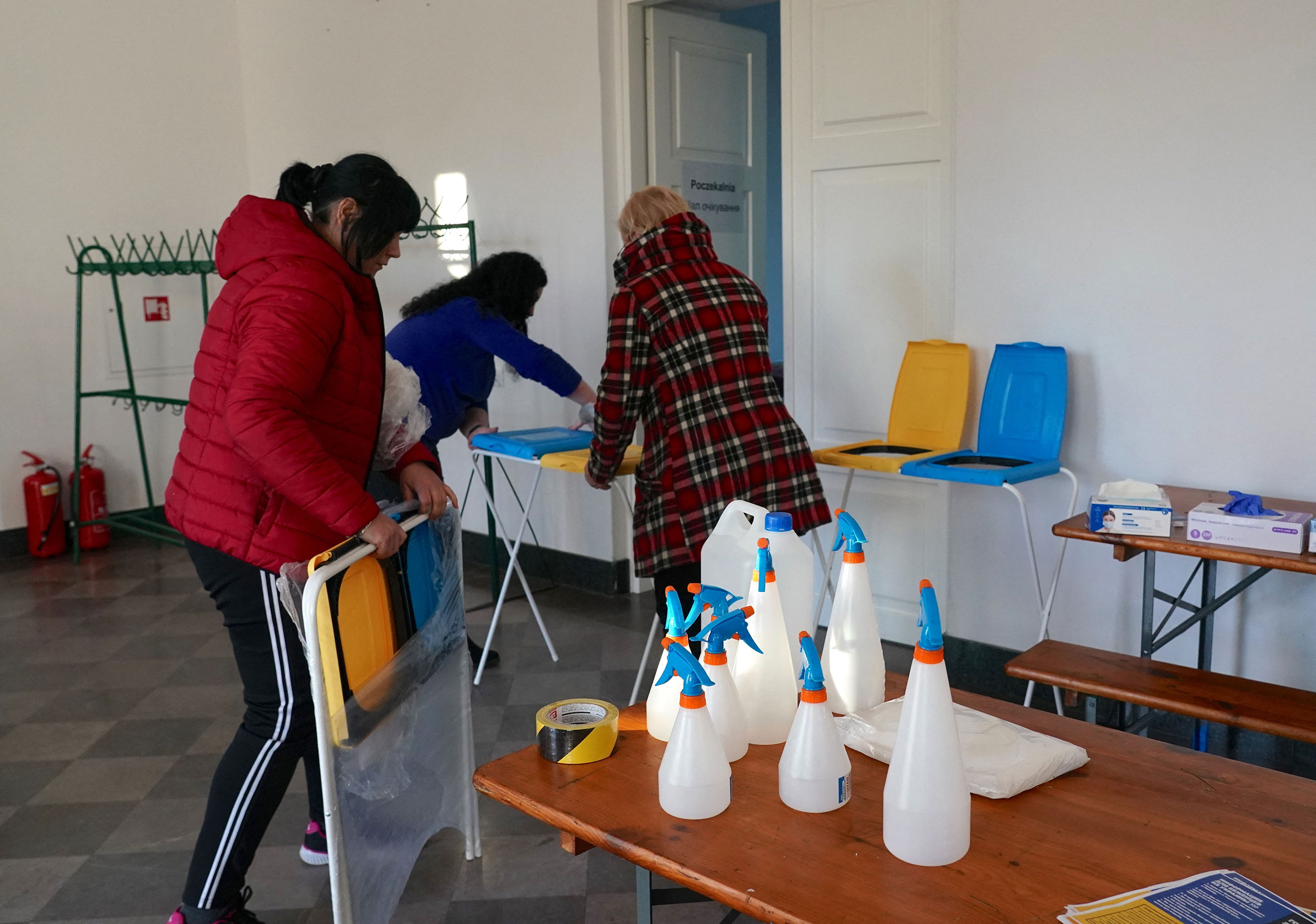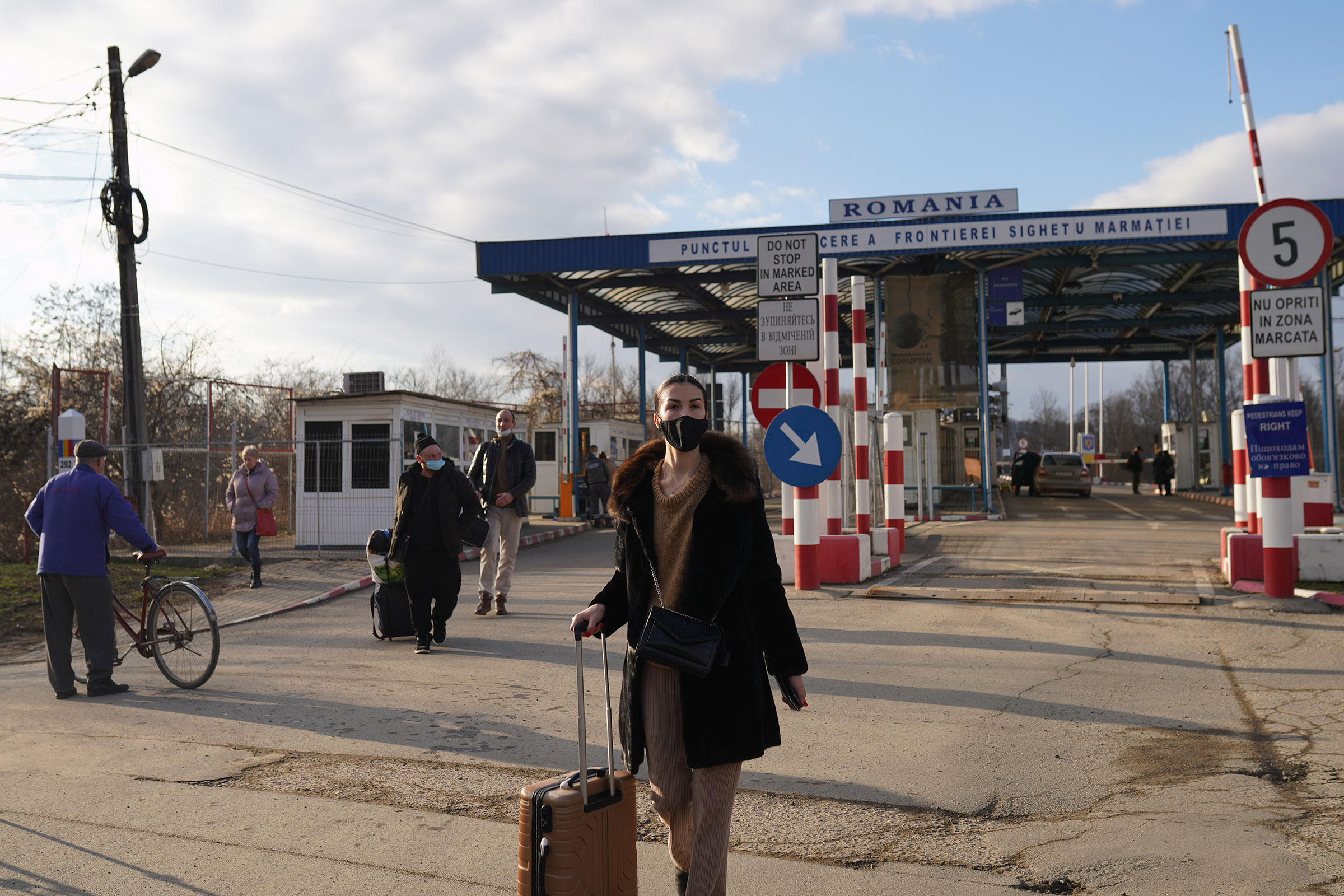In the hours after Russia invaded Ukraine on Thursday, Ukrainians began fleeing their homes in the eastern part of the country. Most were headed to other parts of Ukraine, while others began to trickle across international borders into Poland and other Central European nations, a spokesperson at the International Organization for Migration (IOM), a United Nations agency, told TIME. It was unclear how many people have been displaced so far, the spokesperson said.
Neighboring governments and aid organizations have been preparing for weeks for the potential mass displacement of Ukrainians. Ukraine’s defense minister estimated in December that a Russian-invasion could force between three and five million people to flee their homes.
If anywhere close to that many people are eventually displaced in this conflict, it would dwarf both the 2015-2016 European refugee crisis, which saw the arrival of roughly a million refugees, mostly fleeing Syria, Iraq and Afghanistan, and the 2014 Russian invasion of Crimea, which displaced roughly 1.5 million people, mostly within Ukraine.
Read More: Here’s What We Know So Far About Russia’s Assault on Ukraine
Experts expect the burden of caring for displaced Ukrainians will fall primarily on internal aid organizations and neighboring European countries, with the U.S. providing logistical, financial and personnel support, says Yael Schacher, deputy director for the Americas and Europe at Refugees International, a refugee advocacy organization. “We can insure that the U.S. does its fair share in handling this refugee flow,” she told TIME.
IOM and other UN staff are currently in Ukraine to provide aid to civilians. “We, along with the UN and the humanitarian community are committed to staying and delivering [aid] in a neutral and impartial manner, prioritizing humanitarian imperatives,” a spokesperson for the IOM tells TIME.
U.S. troops have been deployed to neighboring European countries, according to the U.S. Department of Defense. Troops in Poland are working with Polish forces to build centers near the border with Ukraine to begin refugee intakes and provide resources like medical aid, according to The New York Times.

U.S. Agency for International Development (USAID) Director Samantha Power has been communicating with Ukrainian-American communities and organizations to share information about contingency plans for humanitarian aid to Ukraine, according to a public statement on Feb. 21. “We are closely coordinating with international partners to monitor the situation in Ukraine, and will work through them to address humanitarian needs in Ukraine and in the region,” a USAID spokesperson tells TIME. “Our response will be based on an assessment of the needs, in coordination with the government of Ukraine, the United Nations and other humanitarian partners and donors.”
“We are working closely with European allies and partners who will be on the front lines of any response, as well as international organizations and NGOs, to mitigate the humanitarian impacts of a Russian invasion further into Ukraine,” the spokesperson adds.
The governments of all five countries that share a border with Ukraine—Poland, Slovakia, Hungary, Romania and Moldova—which have historically opposed refugee resettlement, announced that they will receive Ukrainian refugees. The European Union has also pledged to process Ukrainian refugees who have fled into EU nations.
Read More: ‘We Will Defend Ourselves.’ Photographs of Ukraine Under Attack
“We hope that there will be as little as possible refugees, but we are fully prepared for them and they are welcome,” said European Commission President Ursula von der Leyen in a public statement on Thursday, adding that the EU will increase financial support to Ukraine, in addition to the 1.2 billion Euros in assistance it announced on Feb. 21 to help stabilize the country. Ukrainians have the right to remain in EU countries for 90 days under specified visa available to them since 2017.
The aftermath of Russia’s 2014 invasion as a model of what’s to come
For many, Russia’s 2014 incursion into the Ukrainian regions of Crimea and Donbas now feels like a dress rehearsal. In the intervening eight years, humanitarian aid groups within Ukraine have formed to address internal displacement and will likely continue to work through the Russian invasion, according to Daphne Panayotatos, an advocate for Europe at Refugees International.
In the aftermath of the 2014 conflict, hundreds of thousands of Ukrainians resettled, both temporarily and permanently, in Poland, which shares the largest border with Ukraine, according to researches at the Rand Corporation. “Poland issued some 300,000 temporary residence visas for Ukrainians in recent years, while some put the total numbers of Ukrainians living and working in Poland after these events as high as two million,” according to a February RAND report.
Benjamin Ward, deputy director of Europe and Central Asia for Human Rights Watch, an international human rights organization, says Ukrainians’ experience in Poland in 2014 is a good sign that the country may keep its doors open again to them this year. But, he cautions, international aid organizations should remain vigilant. Last fall, people migrating through Belarus to arrive at the border with Poland were met with military force.
“There was an enormous amount of human suffering that arose in that situation and there wasn’t a great deal of humanity or compassion or a willingness [by the EU or Poland] to consider the the human toll,” he says. But, he adds, the politics this time around are different.
Panayotatos of Refugees International says Poland’s ambivalent stance on refugees can be chalked up to politics and race. “There’s the politics of it, of course, wanting to stand up to Russia the aggressor. It makes a strong political statement to…categorize [Ukrainians] as refugees,” she tells TIME. “But it’s also because Ukrainians are largely white, Christian Europeans, rather than Middle Eastern and African individuals who are seeking safety. There’s an element there that needs to be pointed out.”
In 2015, Slovakia pledged only to accept Christian refugees. Under President Trump, who slashed the U.S. Refugee Admissions Program to historic lows, Ukrainians became one of the largest groups to successfully resettle in the U.S. in 2020.

Ward adds that non-Ukrainian nationals living in Ukraine, including people from Afghanistan or India, may be particularly vulnerable as the conflict unfolds since they may not be received as openly by neighboring countries. “We still don’t really know what the scale of the displacement is going to be,” he says, “but I think it’s really important that we are focusing on these issues and asking these questions an early stage.”
More Must-Reads from TIME
- Donald Trump Is TIME's 2024 Person of the Year
- Why We Chose Trump as Person of the Year
- Is Intermittent Fasting Good or Bad for You?
- The 100 Must-Read Books of 2024
- The 20 Best Christmas TV Episodes
- Column: If Optimism Feels Ridiculous Now, Try Hope
- The Future of Climate Action Is Trade Policy
- Merle Bombardieri Is Helping People Make the Baby Decision
Write to Jasmine Aguilera at jasmine.aguilera@time.com